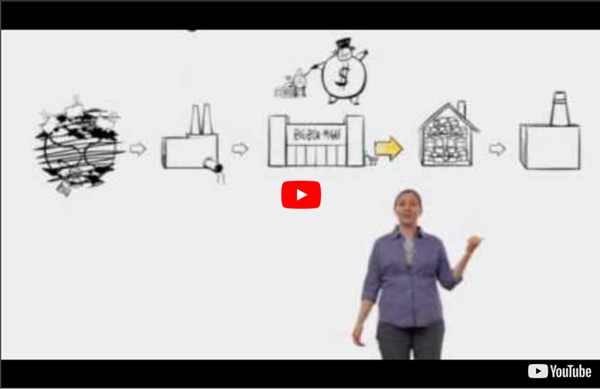



http://www.youtube.com/watch?v=gLBE5QAYXp8
Must Watch Rapid Fire - What Brain and Sperm Share and Why Care Since the invention of radar, cell phone radiation was assumed to be harmless because it wasn't like X-rays. But a sea change is now occurring in the way scientists think about it. The latest research ties this kind of radiation to lowered sperm counts, an increased risk of Alzheimer's, and even cancer. Devra Davis tells the story of the dangers that the cell phone industry is knowingly exposing us-and our children-to in the pursuit of profit. More evidence of Roundup's link to kidney, liver damage ShareThis Scientists report worrisome changes to liver and kidney genes in rats, adding to evidence that a popular herbicide may be toxic August 28, 2015 By Brian Bienkowski Environmental Health News What Is The Plan? Why You Should Consider Participating E Cigarette Forum An e cigarette forum might be just what you need. They say that it’s always a good thing when you have someone who has something in common with you. This is where this comes in to help you.
This video explains how those plastic bits in face washes, scrubs, and toothpastes can hurt ecosystems By now, most of us know that if we want our consciences to be as squeaky clean as our faces, we have to ditch our most beloved scrubbing products. While microbeads — the tiny plastic bits most commonly found in face washes, scrubs, and toothpastes — might do great things for your pores, they could also quietly wreak havoc on the environment by steadily streaming into the Great Lakes and oceans. Couldn’t care less about fish? Get this: Through the magic of the food chain, these little plastic beads actually carry the potential to come back around and screw with human health. We turned to Andrew Maynard, mastermind behind the Risk Bites YouTube channel and director of Arizona State University’s Risk Innovation Lab, to figure out just how hazardous an exfoliator could be. Check out his findings in the video above!
How Happy Is Bhutan, Really? Gross National Happiness Unpacked Mandy/CC BY 2.0 If you haven't already read, in the run-up to the Rio+20 environmental conference (the event roughly six weeks away now) the UN has been highlighting the importance of moving beyond GDP as the end-all-be-all measurement of national progress. Towards that it's highlighting the World Happiness Report, with the research done by the folks at Columbia University's Earth Institute. Hidden away at the end of that report (the entirety of which is worth reading, for those of the appropriately wonky inclination), is a case study of Bhutan and its development of the Gross National Happiness metric.
KMS and MAK Activation Scenarios The following sections describe key scenarios for KMS and MAK activation. On This Page KMS Scenarios MAK Scenarios VAMT Support for KMS Activation Converting KMS to MAK Activation KMS Scenarios Watch Free Documentaries Online A colorful and provocative survey of anarchism in America, the film attempts to dispel popular misconceptions and trace the historical development of the movement. The film explores the movement both as a native American philosophy stemming from 19th century American traditions of individualism, and as a foreign ideology brought to America by immigrants. This documentary features rare archival footage and interviews with significant personalities in anarchist history including Murray Boochkin and Karl Hess, and also live performance footage of the Dead Kennedys. “Anarchists are those who advocate the absence of the state, arguing that common sense would allow people to come together in agreement to form a functional society allowing for the participants to freely develop their own sense of morality, ethics or principled behaviour. The word “anarchy” is often used by non-anarchists as a pejorative term, intended to connote a lack of control and a negatively chaotic environment.
United States How’s Life? The United States performs very well in overall measures of well-being, as shown by the fact that it ranks among the top countries in a large number of topics in the Better Life Index. Money, while it cannot buy happiness, is an important means to achieving higher living standards. In the United States, the average household net-adjusted disposable income is 38 001 USD a year, more than the OECD average of 23 047 USD a year. But there is a considerable gap between the richest and poorest – the top 20% of the population earn approximately eight times as much as the bottom 20%. In terms of employment, 67% of people aged 15 to 64 in the United States have a paid job, slightly above the OECD employment average of 66%.